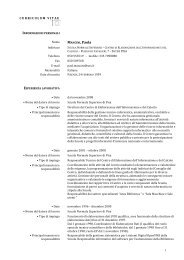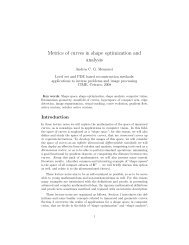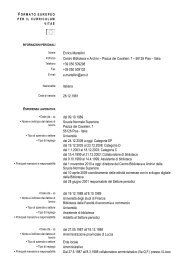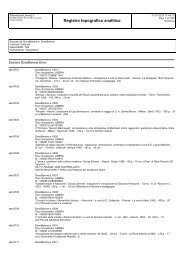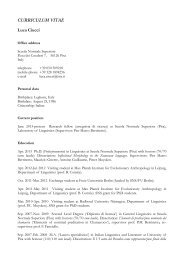Non-conventional uses of the Pluperfect entional uses of the ...
Non-conventional uses of the Pluperfect entional uses of the ...
Non-conventional uses of the Pluperfect entional uses of the ...
Create successful ePaper yourself
Turn your PDF publications into a flip-book with our unique Google optimized e-Paper software.
QUADERNI DEL LABORATORIO DI LINGUISTICA – VOL. 9,2/2010different semantic properties, may fill in <strong>the</strong> PPF slot. 3 To <strong>the</strong> extent, however, that <strong>the</strong>above statement is true, it is in striking contrast with <strong>the</strong> situation to be found withano<strong>the</strong>r member <strong>of</strong> <strong>the</strong> perfect-tenses set, namely <strong>the</strong> Present Perfect, characterized byconsiderable diachronic instability, namely by its cross-linguistic tendency to shiftfrom <strong>the</strong> domain <strong>of</strong> <strong>the</strong> perfect into <strong>the</strong> domain <strong>of</strong> pure perfectivity, or “aoristicity”.Assuming <strong>the</strong> given background, this paper will address a somehow deviant usage<strong>of</strong> <strong>the</strong> PPF in Italian and (tentatively) German. The examples are taken from literarytexts, for <strong>the</strong>y <strong>of</strong>fer a better illustration <strong>of</strong> <strong>the</strong> issue, but this should not be interpretedas entailing that <strong>the</strong> phenomenon at hand does not emerge in <strong>the</strong> colloquial registers.The temporal architecture <strong>of</strong> all narrative texts – including <strong>the</strong> oral ones – rests on<strong>the</strong> so-called “propulsive” tenses, <strong>the</strong> ones that have <strong>the</strong> capacity <strong>of</strong> pushing forward,so to say, <strong>the</strong> thread-<strong>of</strong>-discourse. In literary narrative texts, in particular, <strong>the</strong>propulsive function is standardly – i.e., traditionally – assigned to aoristic pasts (cf. <strong>the</strong>Fr. Passé Simple or <strong>the</strong> It. Passato Semplice, traditionally called Passato Remoto), orat least tenses that may take on this interpretation although this is not <strong>the</strong>ir onlyreading (cf. <strong>the</strong> Eng. Simple Past). Occasionally, <strong>the</strong> propulsive function may betransferred to o<strong>the</strong>r tenses, like <strong>the</strong> “narrative” Present in <strong>the</strong> European literarytradition. In oral narratives, <strong>the</strong> use <strong>of</strong> <strong>the</strong> Present as a propulsive tense, in alternationwith <strong>the</strong> perfective Past(s), is fairly frequent. Depending on <strong>the</strong> degree <strong>of</strong> involvement<strong>of</strong> <strong>the</strong> speaker, o<strong>the</strong>r possibilities may emerge, such as <strong>the</strong> alternation <strong>of</strong> Simple vs.Compound Past in Romance. 4 Interestingly, many languages – most notably among______________________________________________________________________This expansion into <strong>the</strong> domain <strong>of</strong> modality is obviously less viable, e.g., in Italian (where it isrestricted to stylistically substandard usages) due to <strong>the</strong> division <strong>of</strong> labor between Indicative andSubjunctive PPF. Needless to say, <strong>the</strong> existence <strong>of</strong> PPF tenses in different moods is a highly interestingtopic, which however this paper does not address. To <strong>the</strong> extent that Subjunctive <strong>Pluperfect</strong>s will showup in <strong>the</strong> examples presented below, <strong>the</strong> analysis will be restricted to <strong>the</strong>ir temporal-aspectual meaning,while <strong>the</strong>ir modality component will not be discussed.3A case in point is Italian, with two <strong>Pluperfect</strong>s in <strong>the</strong> indicative mood (apart from <strong>the</strong> SubjunctivePPF), traditionally called Trapassato Prossimo and Trapassato Remoto (Piucheperfetto and Trapassato inBertinetto 1986). The examples to be discussed in this paper are however limited to <strong>the</strong> most frequent(and semantically unconstrained) alternative, namely <strong>the</strong> PPF (Piucheperfetto). For a discussion <strong>of</strong> <strong>the</strong>structural differences between <strong>the</strong>se two forms, see Bertinetto (1987).4The use <strong>of</strong> <strong>the</strong> “narrative” Present in English oral narratives, and its strategic alternation with <strong>the</strong>Simple Past, has been extensively studied at least since Wolfson (1979), Schiffrin (1981) and Silva-Corvalán (1983). As for <strong>the</strong> alternation between Simple vs. Compound Past, <strong>the</strong> issue was dealt with at2


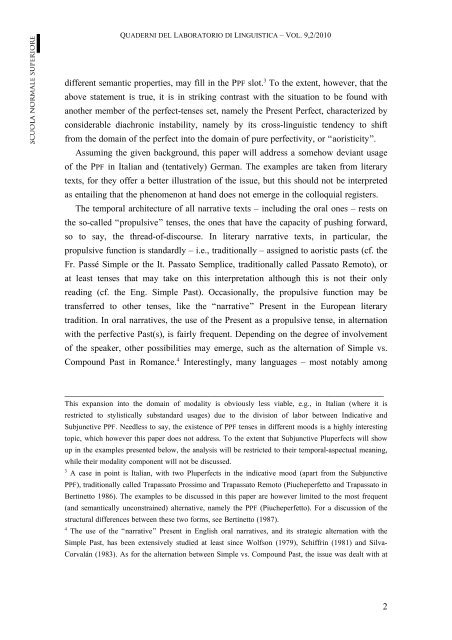
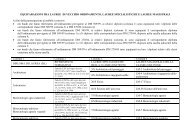
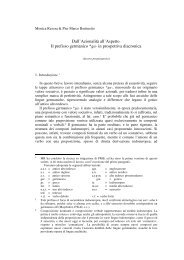
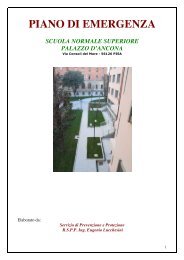
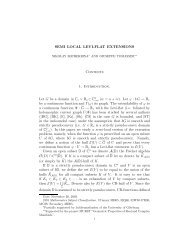
![4. Ghost [Å] vowels in French - Laboratorio di Linguistica](https://img.yumpu.com/49999334/1/184x260/4-ghost-a-vowels-in-french-laboratorio-di-linguistica.jpg?quality=85)



